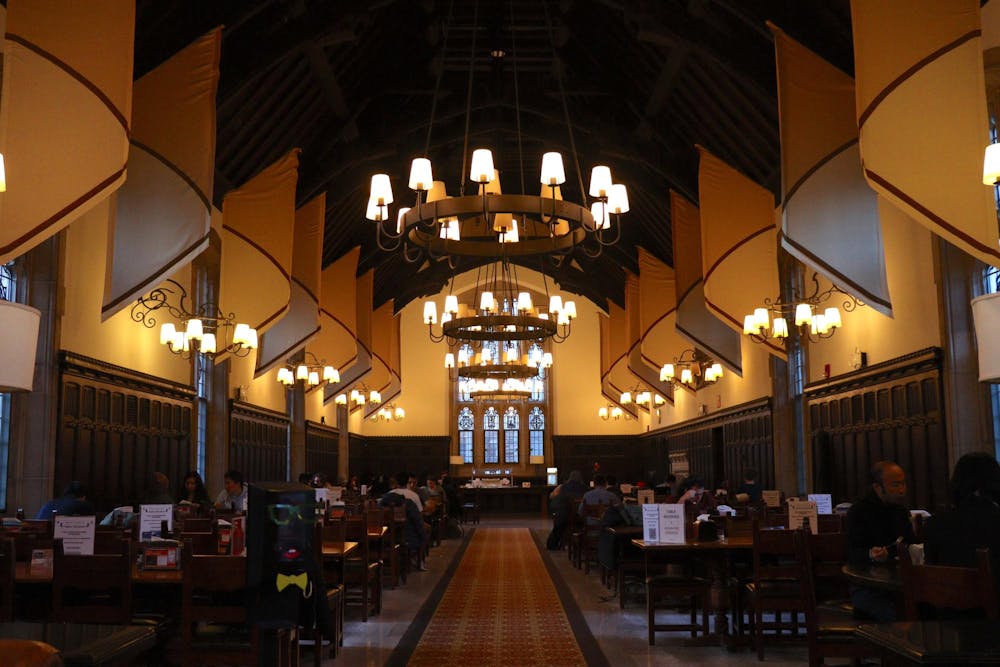With many students and staff going home or on trips over break, groups such as athletes; first-generation, low-income (FLI) students; and international students often remain on campus. As Thanksgiving break approaches, The Daily Princetonian spoke with students belonging to these groups about their experiences with meal plans when the University is not in session.
Nathan Gage ’24 is a Residential College Advisor (RCA) for Rockefeller College, a member of Charter Club, and a FLI student from the United Kingdom. Gage said in an email to the ‘Prince’ that during fall break, he “definitely spent more money than usual,” explaining that he “couldn’t eat in [his] eating club.” Because eating clubs are closed over breaks, members of eating clubs are forced to eat elsewhere.
Gage noted his desire for more clarity in regards to the meal plan, suggesting “a Tigers in Town-like model,” and noting that “it would be great if some provisions were in place [for eating club members].”
There were two temporary meal plan options for students not on the unlimited meal plan over fall break: a block of five and a “traditional fall recess meal plan,” costing $81 and $220 respectively.
University Spokesperson Ahmad Rizvi wrote in an email to the ‘Prince’ that “four percent of the meals used during recess were guest meals.” He added that “approximately 64 percent of students who have purchased a meal plan used at least one meal during the break period.”
Gage is also on a RCA meal plan, but explained that “even during term time, there is not a lot of clarity about the details of the RCA meal plan.” He added that he is “pretty sure [he] get[s] two swipes a day,” including during breaks. Gage expressed frustration regarding the lack of clarity and said that “it is often hard to figure out when [the RCA meal plan] is in place … it seems like no one really knows.”
Rizvi wrote that “since these groups are associated with the residential college program, the colleges determine if meals are provided during break periods.”
Gage noted, “We are lucky as RCAs that we get paid well so it becomes less of a problem, but it is always in the back of my mind.” While Gage was able to fund his “eat[ing] out / take out at least five times during fall break,” other FLI students on campus struggled.

Amanda Hugas ’27 is a FLI student on the unlimited meal plan. They spent their fall break on campus, describing the experience with meal changes as “chaotic” and addressed a number of problems they encountered with the meal provisions during break.
“I was just super hungry during the night,” they told the ‘Prince.’ “I survived, but that doesn’t mean I was happy during it.”
Hugas called for late night food options during breaks, saying, “if there was just a place to grab food between 8 to 10 p.m., [that] would’ve been enough for me,” noting that the dining halls should “at least let us take food out to save for later” during breaks.
Rizvi noted that “Frist Gallery and all of the cafés are open during break periods along with a dining hall.” During fall break, Frist Food Gallery was open from 8 a.m. to 4 p.m., Oct. 16 through Oct. 20; 11 a.m. to 5 p.m. on Oct. 14; and 11 a.m. to 6 p.m. on Oct. 21. It was closed Oct. 15 and Oct. 22.

He also added that during fall recess, both Whitman/Butler and Forbes dining halls remained open.
Hugas went to Wawa for food, “which got expensive,” they told the ‘Prince.’ As a FLI student, Hugas expressed frustration with the situation, saying, “I always try to avoid spending my own money because of how little I own … It sucks having to spend money that you’re trying to save for something simple like food.”
Rizvi noted that “financial aid students who do not participate in a University meal plan have funding allotted to their food costs as part of their financial aid package.”
Hannah Mulligan ’27 is a member of Princeton’s women’s rugby team who is on the unlimited meal plan and spent fall break on campus. She described her experience with the meal plans over break to be “good,” adding that “we had brunch and dinner. We got per diems for breakfast.”
Mulligan noted that she “did not spend my own money,” but did spend “some of the per diem given to me.” She also explained that “there is usually a fueling station for pre/post practice snacks that closed during fall break. It would have been nice to have snacks.”
Rizvi noted that “meals for athletes are planned and scheduled in coordination with Athletics with either dining halls or per diem.”
Victoria Davies is a News contributor for the ‘Prince.’
Please send any corrections to corrections[at]dailyprincetonian.com.








